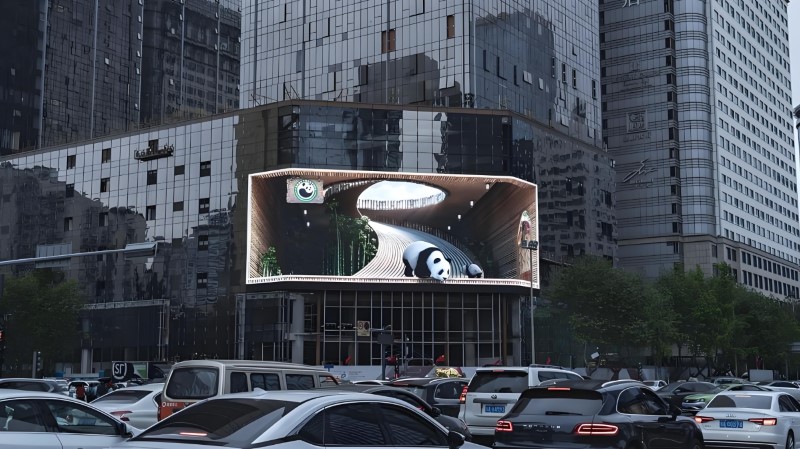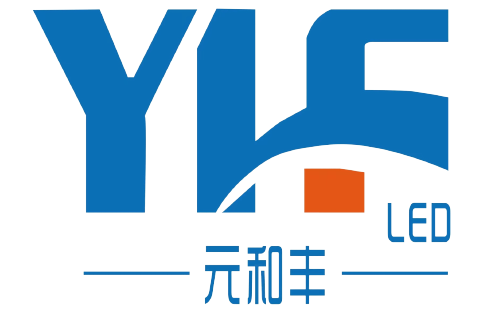As cities around the world evolve into "smart cities," the integration of cutting-edge technologies becomes increasingly essential for creating dynamic, interactive, and well-managed urban environments. One of the most prominent innovations in this transformation is the use of LED display screens. These versatile, high-tech screens not only serve as tools for advertising and public information but also play an essential role in enhancing the cultural identity, functionality, and safety of cities. From showcasing cultural heritage to providing critical public services, LED displays are integral to building smarter, more efficient urban spaces. In this article, we explore the various roles of LED display screens in smart cities, their integration with IoT technologies, and their impact on city image and emergency response systems.

LED Display Screens in Smart Cities: Beyond Basic Advertising
LED display screens have far surpassed their original role of simply showcasing advertisements. In the context of smart cities, these displays are utilized in a wide variety of applications that contribute to urban efficiency, sustainability, and the overall quality of life. Here are several key areas where LED screens are making an impact:
Smart Environmental Management:
- LED displays can be integrated into environmental monitoring systems to provide real-time information on air quality, pollution levels, and other environmental parameters. By displaying this data in public spaces, cities can raise awareness about environmental issues and encourage sustainable practices among residents. For instance, an LED screen in a park could display current air quality readings, reminding people to take action on days with high pollution levels.
Smart Healthcare:
- In healthcare settings, LED displays are being used in hospitals and clinics to share real-time information, such as patient waiting times, emergency alerts, and health tips. In public areas, these screens can help educate citizens about preventative health measures, vaccination drives, and public health campaigns. Moreover, with IoT integration, these displays can provide live updates from hospitals or healthcare authorities in times of emergencies, enhancing communication during health crises.
Smart Transportation:
- LED displays are also crucial in smart transportation systems. Used in digital billboards, train stations, bus terminals, and airports, they provide passengers with real-time updates on schedules, delays, or route changes. Additionally, traffic management systems utilize LED displays for managing traffic flow, promoting alternate routes during peak hours, and displaying real-time traffic conditions.
The Integration of LED Display Screens with IoT Technology
The future of smart cities relies heavily on the seamless integration of various technologies to create a connected, efficient urban ecosystem. One such integration is the coupling of LED display screens with the Internet of Things (IoT). This combination brings a new level of intelligence and interactivity to city management:
Real-Time Data Transmission:
- IoT-enabled LED displays can access and transmit real-time data from various sensors embedded throughout the city. For example, traffic sensors, environmental monitoring devices, and emergency alert systems can send data to LED screens to provide citizens with up-to-date information about their surroundings. This dynamic exchange of information enhances urban management by allowing city officials to monitor and respond to issues more effectively.
Interactive and Personalized Content:
- With IoT integration, LED displays can become highly interactive. Touchscreen LED panels in public spaces allow people to access personalized information, such as directions, news updates, and event schedules. IoT technology can enable the system to adjust content based on real-time data such as weather conditions or local events, creating a more engaging and responsive experience for citizens.
Smart City Management:
- IoT-connected LED screens also enhance city management by providing a platform for efficient communication between city officials and the public. These screens can broadcast important announcements, such as public meetings, or alert citizens to emergencies. Furthermore, they can be synchronized with other smart systems to display information relevant to traffic flow, waste management, or public safety.
Enhancing City Image Through LED Displays: Case Studies
LED displays are a powerful tool for enhancing the public image of a city. Many cities worldwide have embraced this technology to promote their cultural identity, increase tourism, and improve citizens’ engagement with local events and initiatives. Here are some examples of how LED screens are being used to enhance city image:
Times Square, New York:
- Arguably one of the most iconic examples of LED displays, Times Square in New York City uses vast LED screens to showcase advertisements, but they also promote cultural and social messages. These screens contribute to the vibrant, dynamic atmosphere of the city, making it a global cultural hub. The integration of art, news, and entertainment on these displays helps convey New York’s diverse cultural scene and contributes to its status as a global metropolis.
Paris, France:
- Paris has been integrating LED screens into its urban spaces, not only for advertising but to display cultural events, public messages, and live performances. These screens have become an essential part of the city's efforts to modernize public spaces while preserving its historical and cultural heritage. For example, during cultural festivals or fashion weeks, the city uses LED displays to promote events and show live streams, creating a sense of excitement and inclusivity.
Dubai, UAE:
- Dubai uses LED screens in its public spaces to create visually stunning digital art displays. The city is known for its modern architecture, and LED screens help elevate the futuristic image of Dubai. These displays not only promote commercial products but also showcase the city’s rich cultural heritage and innovative spirit. Dubai’s use of LED screens to create immersive experiences in public areas like the Dubai Mall has contributed to its global image as a city of innovation.
LED Displays in Emergency Response: A Vital Role in Crisis Management
LED displays play a critical role in managing emergencies and providing timely information during crises. Their ability to display large-scale, real-time updates makes them invaluable during natural disasters, public safety events, or health emergencies. Here's how LED screens contribute to crisis management:
Natural Disasters:
- In the event of natural disasters such as earthquakes, floods, or hurricanes, LED displays can be used to broadcast evacuation routes, shelter locations, and emergency instructions. These screens can provide real-time updates from local authorities, ensuring that citizens receive accurate and timely information to stay safe.
Public Safety and Security:
- During incidents like public protests, security breaches, or terrorism-related events, LED displays can broadcast emergency alerts and instructions, helping to keep the public informed and calm. They can also display information about road closures, traffic detours, and safety measures.
Health Emergencies:
- In health crises, such as pandemics, LED screens are used to display important health information, including guidelines, vaccination schedules, and updates from public health officials. This helps keep citizens informed and reinforces the measures being taken to protect their well-being.
Conclusion
LED display screens are transforming cities by becoming integral components of smart city infrastructure. From enhancing city culture and promoting tourism to facilitating better communication and crisis management, these screens offer countless benefits to both residents and visitors. As cities continue to adopt IoT technologies, LED displays will become even more interactive, data-driven, and essential to the management of urban life. By integrating LED displays with other smart technologies, cities can create more dynamic, responsive, and safe environments that reflect their unique identity and values. In this way, LED screens not only help cities project their image but also play a vital role in shaping their future.
